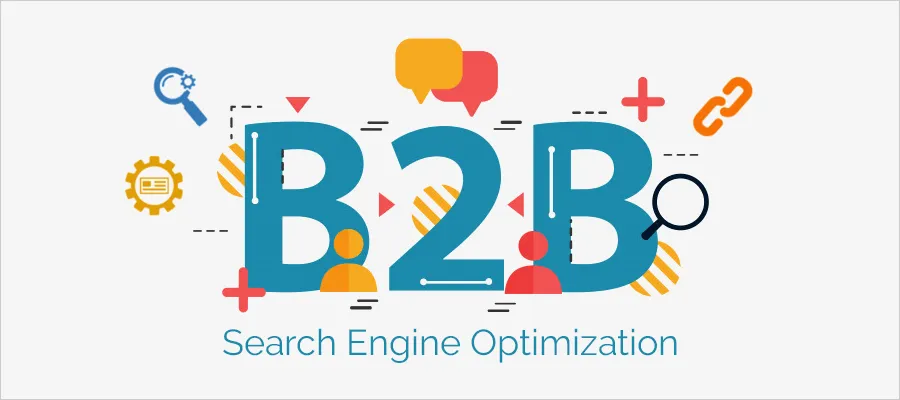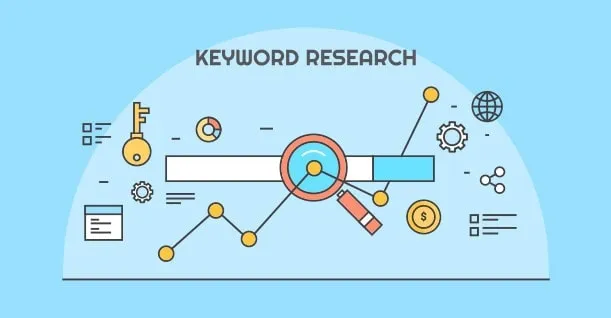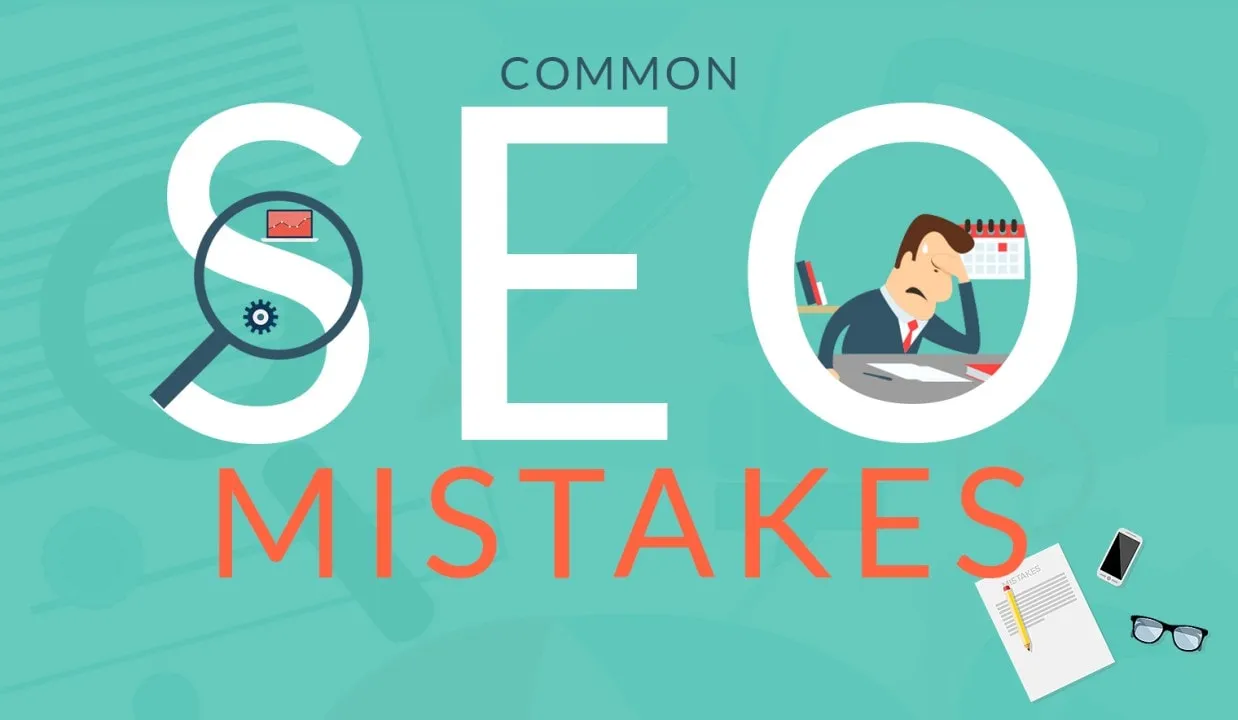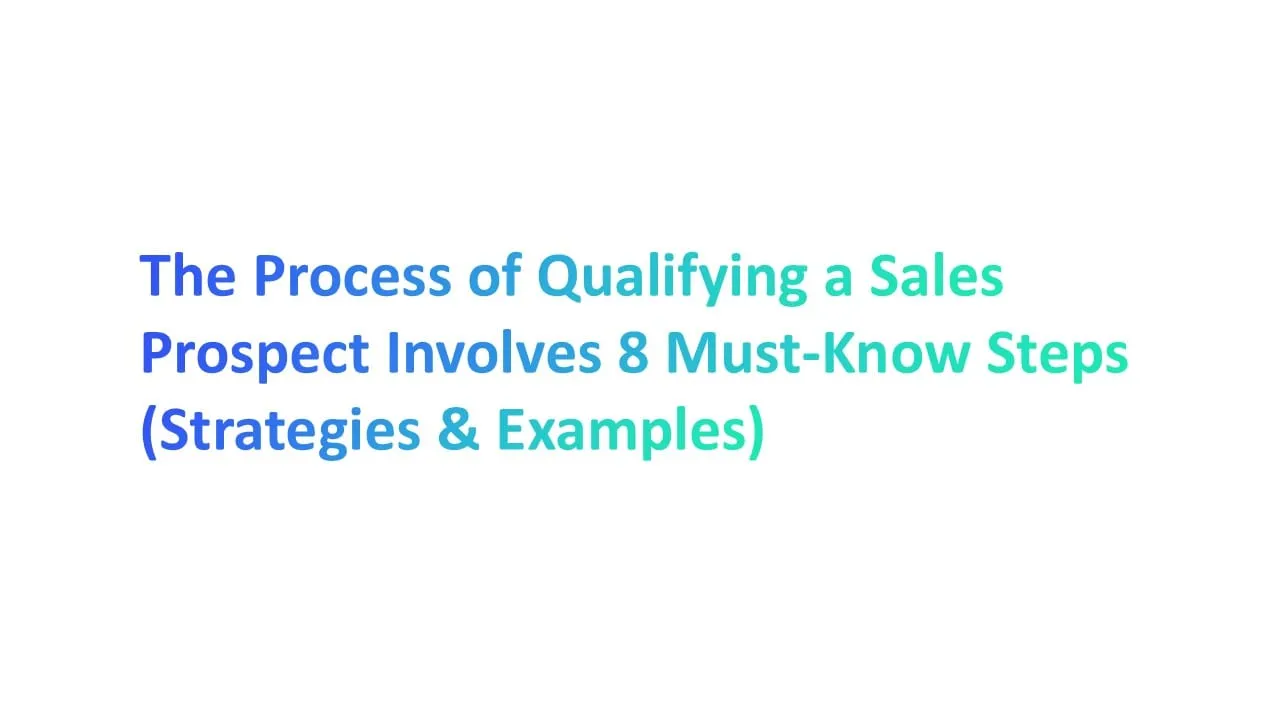Did you know that 68% of online experiences start with a search engine? For B2B companies, this means crafting an SEO plan that not only drives traffic but also attracts high-value leads ready to convert.
This guide is designed to show key elements to help you build a robust B2B SEO strategy, from mastering keyword research thorough competitive analysis to optimizing technical SEO.
What is B2B SEO?

B2B SEO, or Search Engine Optimization for Business-to-Business, is about helping businesses find other businesses online.
Unlike B2C SEO, which targets consumers, B2B SEO focuses on companies searching for specific services, solutions, or products. For example, a software company might look for "CRM tools for small businesses."
Why is B2B SEO Important?
When your website ranks higher on search engines like Google, more businesses can find you. This means better leads, more partnerships, and higher revenue.
According to HubSpot, 68% of online experiences begin with a search engine. If your B2B company isn't visible, you're missing potential clients.
Unlike regular SEO, B2B SEO targets the key decision makers like CEOs or managers. It focuses on keywords that align with search intent and business needs. By using effective SEO, you can attract the right audience and improve your company's growth.
How B2B SEO Differs from B2C SEO
Key Steps to Build a SEO Strategy for B2B

1. Define Your Target Audience
Your target audience is the group of businesses you want to reach. These businesses should need your product or service.
If you don’t know who you’re talking to, your SEO efforts targeted marketing strategy might miss the mark. For example, a software company that serves small businesses shouldn’t aim at enterprises.
How to implement it:
- Start with buyer personas. A buyer persona is a profile of your ideal customer. It includes details like industry, company size, pain points, and goals.
- Use tools like Google Analytics to understand your current visitors. See where they come from and what they engage with.
- Think about the customer journey. Are they at the research stage, comparing options, or ready to buy? Tailor your content for each stage of their buying process.
2. Perform Keyword Research
Keyword research is finding the words and phrases businesses use when searching for your services. For example, if you sell CRM software, keywords might include “CRM tools for small businesses” or “affordable CRM software.”
Good keyword research ensures you rank for terms that potential customers are searching for. It drives organic traffic and brings in high-quality leads.
How to implement it:
- Use tools like Google Keyword Planner or Ahrefs to find keywords with high search volume but low competition.
- Focus on long-tail keywords. These are specific phrases like “SEO strategy for B2B SaaS companies” that attract more targeted traffic.
- Analyze competitors. Look at their search rankings to find gaps you can fill.
- Group related keywords. For example, if you’re targeting “B2B SEO,” also include terms like “SEO strategy” and “search intent.”
3. Audit Your Website
A website audit is a complete check-up of your website to see how well it performs. It helps you find technical issues and improve your SEO efforts.
If your website has problems like slow loading speed, broken links, or poor mobile usability, it can hurt your search engine rankings. Businesses rely on fast and easy-to-use websites to make decisions. A proper audit ensures your site meets these expectations.
How to implement it:
- Check for Technical Issues: Use tools like Screaming Frog SEO Spider or Google Search Console to scan your website. Look for broken links, missing meta descriptions, and duplicate content.
- Improve Site Speed: Slow websites can lose visitors. Compress images and use caching tools to improve loading times.
- Make It Mobile-Friendly: Ensure your website looks great and works well on mobile devices.
- Organize Internal Links: Use internal links to connect related content. This helps visitors and search engines navigate your site better.
- Test User Experience (UX): Check if your website is easy to use. Is your menu clear? Can users find what they need in a few clicks?
4. Optimize On-Page SEO
On-page SEO means improving the content and structure of your website to rank higher on search engines.
Search engines, like Google, analyze your web pages to understand your content. Well-optimized pages can enhance visibility in your search engine results and attract organic traffic.
How to implement it:
- Use Relevant Keywords: Include keywords like “SEO strategy for B2B” naturally in your titles, headers, and content. Don't overuse them.
- Write Descriptive Meta Tags: Create clear and engaging meta descriptions for every page. This encourages users to click on your links in search results.
- Optimize Title Tags: Use titles that include your main keyword. Keep them under 60 characters for better visibility.
- Improve Content Quality: Write helpful content that solves problems for your target audience. For example, create guides on "how to conduct keyword research" or "how to build a sales funnel."
- Add Alt Text to Images: Use descriptive text for all images on your site. This improves accessibility and helps search engines understand your content.
5. Create High-Quality Content

Creating high-quality content means writing helpful and accurate information that your target audience needs. This content should answer their questions and give helpful tools to solve their problems.
Good content helps your website rank higher on search engine results. It also builds trust with your readers and encourages them to visit your site again.
According to HubSpot, companies that publish 16+ blogs monthly get 3.5x more traffic than those publishing less.
How to implement it:
- Understand Search Intent: Think about why your audience searches for specific terms. For example, if someone searches "B2B SEO tips," they want actionable advice.
- Use Relevant Keywords: Include keywords like "SEO strategy for B2B", "keyword research", and "search volume" naturally in your content. Avoid overloading them.
- Write in Simple Language: Use short sentences and clear words. This makes your content easy to read for everyone.
- Diversify Your Content: Mix blogs, videos, infographics, and case studies. Each type appeals to different users.
- Focus on Value: Answer common questions, provide tips, and share actionable steps. High-quality content is more likely to get shared and linked.
6. Leverage Link-Building
Link-building is getting other websites to link to your content. These links, called backlinks, tell search engines your site is trustworthy and relevant.
Websites with more backlinks rank higher on search engine rankings. Backlinks also bring new visitors to your site.
How to implement it:
- Create Shareable Content: Content that solves problems or is full of useful tips is more likely to get shared and linked. For instance, write a guide on "how to conduct keyword research for B2B businesses."
- Reach Out to Other Sites: Contact websites in your industry and ask them to link to your content. Offer them value, such as guest blogs or a partnership.
- Fix Broken Links: Use tools like Screaming Frog SEO Spider to find broken links on other websites. Suggest your content as a replacement.
- Use Internal Links: Link your own articles and pages to each other. This improves navigation and SEO performance.
- Earn Backlinks Naturally: Avoid buying links. Search engines penalize sites that use artificial tactics.
7. Optimize for Local SEO (If Relevant)
Local SEO helps businesses appear in local search results when customers look for services nearby. For instance, if a business searches for "B2B logistics company in New York," local SEO ensures your company shows up in the results.
Local SEO is critical if your business serves specific regions or cities. Google reports that 76% of people who search for something nearby visit a business within a day. If you want to attract regional customers, optimizing for local SEO ensures they find you.
How to implement it:
- Create a Google Business Profile: Register your company on Google Search Console and include accurate details like your address, hours, and contact number.
- Use Local Keywords: Include terms like “B2B logistics in [city]” on your website and landing pages.
- Get Listed in Directories: Add your business to trusted directories like Yelp or industry-specific platforms.
- Encourage Reviews: Ask customers to leave reviews on Google. Positive reviews improve your search rankings.
- Focus on Local Backlinks: Collaborate with local partners to earn quality backlinks from other businesses in your area.
8. Focus on Technical SEO
Technical SEO improves your website's structure and performance, making it easier for search engines to crawl and index your content.
A poorly optimized website can hurt your search engine rankings. Slow page speeds, broken links, or errors in your site can drive visitors away. Google favors websites that load quickly, are mobile-friendly, and have no technical errors.
How to implement it:
- Improve Site Speed: Compress large images, enable browser caching, and use a fast web hosting service. Tools like Google Analytics and Screaming Frog SEO Spider can identify performance issues.
- Fix Broken Links: Regularly check for and repair broken links using tools like Ahrefs. These links can hurt your site’s SEO performance.
- Use HTTPS: Ensure your site is secure with HTTPS. Websites without it appear untrustworthy to visitors.
- Optimize Mobile-Friendliness: Many users search on mobile. Ensure your site adapts well to smaller screens with responsive design.
- Create an XML Sitemap: A sitemap helps search engines understand your site’s structure. Use tools to generate one and submit it through Google Search Console.
9. Track and Measure Results
Tracking and measuring results means monitoring how well your SEO strategy for B2B is performing. It helps you see what’s working and where you need to improve.
If you don’t gather data and measure your results, you can’t know if your SEO efforts are successful. By tracking data, you can make smarter decisions to improve your search engine rankings and attract more organic traffic.
How to implement it:
- Set Up Google Analytics: Use tools like Google Search Console and Google Analytics to track visitor numbers, page views, and engagement.
- Monitor Keyword Rankings: Keep an eye on how well your target keywords, like “SEO strategy for B2B,” are ranking in search results.
- Check Conversion Rates: Track how many visitors take action, like filling out a form or buying a product.
- Analyze Backlinks: Review the quality and quantity of your link-building efforts.
- Measure Traffic Sources: Understand if your traffic comes from search engines, social media, or other websites.
How to Conduct Keyword Research More Effectively

1. Understand Your Industry and Target Audience
To start effective keyword research, you need to know your business and your customers. Who are your buyers? What are their problems? What solutions do they need? Understanding your target customer satisfaction and audience helps you find keywords they use when searching online.
For example, if your company sells software to small businesses, think about terms like "affordable accounting software" or "best tools for small business."
Use tools like Google Keyword Planner to discover popular keywords in your industry. Look for words with good search volume but moderate competition.
This approach ensures you target the right people, saving you time and effort. When you know your audience, it becomes easier to rank for relevant keywords and attract the right traffic.
2. Focus on Search Intent
Search intent is the reason behind a keyword search. Are users looking for information, comparing products, or ready to buy? When you understand this, you can match your content to their needs.
For instance, if someone searches for "what is B2B SEO," they want information. If they search for "best B2B SEO tools," they’re likely comparing options. To meet their intent, create content that answers their questions, explains concepts, or highlights solutions.
Tools like Google Search Console can help you analyze which queries lead users to your site. This data can refine your keyword strategy and help you build content that aligns with user goals. When you meet search intent, you improve user experience and your chances of ranking higher in search results.
3. Find Long-Tail Keywords
Long-tail keywords are specific phrases that people use to search for information. These keywords usually have three or more words and are less competitive than general keywords. For example, instead of "SEO tools," a long-tail keyword might be "best SEO tools for small businesses."
Why are they important? Long-tail keywords often show higher search intent because they are more targeted. They help you attract the right audience and improve your chances of converting visitors into customers.
To find these keywords, use tools like Google Keyword Planner. Look for phrases with moderate search volume and low competition.
You can also check your competitors’ websites and service pages for ideas. Using long-tail keywords makes your content more relevant and helps you rank higher in search engine results.
4. Analyze Competitors’ Keyword Strategies
Understanding what works for your competitors can give you an edge. Check which keywords they rank for and how they use them in their content. This competitive analysis also helps you identify gaps in your strategy and discover new opportunities.
Start by using tools like Google Analytics or SEO audit platforms to analyze their website. Look for keywords driving traffic to their pages. Focus on keywords they rank well for, but also identify ones they are missing.
Once you have this data, create a keyword strategy that targets overlooked keywords while competing for high-value ones. By staying ahead of your competitors, you can drive more organic traffic and improve your search engine rankings.
5. Group Keywords Strategically
Grouping keywords is an essential step in keyword research. It helps you create better content and improves your SEO strategy for B2B businesses. By organizing keywords into categories, you can plan content that targets multiple search queries at once.
When you group keywords, it becomes easier to match them with specific topics or pages. This strategy ensures your website covers all relevant keywords and aligns with search engine intent.
For example, grouping keywords like "SEO tools," "technical SEO audit," and "on-page optimization" can guide you in creating content tailored to technical SEO.
Start by identifying primary and secondary keywords. Use tools like Google Keyword Planner to find related terms. Then, group them based on themes, such as "content marketing," "search engine optimization," or "target audience."
Why Search Volume is Crucial in B2B SEO

Search volume plays a vital role in shaping your B2B SEO strategy. It provides insights into the popularity of specific keywords and helps you prioritize your efforts for maximum impact.
Here’s why search volume matters:
1. Understand Keyword Demand: Search volume tells you how many people are searching for a keyword each month. High search volume means more potential traffic. But it’s not just about big numbers. For B2B SEO, you need to focus on keywords your target audience uses when searching for solutions.
2. Prioritize Keywords That Match Intent: Not all keywords with high search volume are useful. You must pick those that match your audience's intent. For example, if someone is looking for "B2B SEO strategy," they likely need guidance or a service. Matching intent ensures your content solves their problem, leading to better engagement.
3. Optimize Your Sales Funnel with Data-Driven Keywords: Search volume data helps you map keywords to each stage of your sales funnel. Use specific terms for awareness (like "what is B2B SEO") and others for action (like "B2B SEO services near me"). This strategy keeps potential customers engaged at every step of their journey.
4. Track Seasonal Trends in Search Volume: Search volume changes with seasons or industry trends. For instance, if your business peaks during the holiday season, keywords like "holiday B2B marketing strategies" might have higher search volume. Tracking these trends keeps your content timely and relevant.
5. Leverage Search Volume for Content Planning: Knowing search volume helps you decide which funnel keywords to prioritize. Focus on high-volume, high-intent keywords to attract more traffic. For example, creating blogs or landing pages around "effective B2B SEO strategies" can drive qualified leads.
How to Monitor Search Engine Performance

1. Set Up Google Search Console
Google Search Console (GSC) is a free tool that shows how your site performs on search engines. It provides insights on search queries, keyword rankings, and organic traffic.
How to use it:
- Go to Google Search Console and log in with your Google account.
- Add your website by verifying ownership using methods like HTML tags or domain provider verification.
- Monitor metrics like clicks, impressions, and average position.
GSC also identifies technical issues, such as broken links or mobile-friendliness problems, so you can fix them quickly.
2. Use Analytics Tools to Measure Traffic
Analytics tools like Google Analytics show how visitors interact with your site. You can analyze organic traffic, landing pages, and bounce rates.
How to use it:
- Set up Google Analytics by adding its tracking code to your site.
- Check the "Acquisition" tab to see which keywords or search engines bring the most traffic.
- Look at user behavior on pages with high search volume or conversions. Use tools that can also help by crawling your site to identify SEO opportunities and improve internal links.
3. Monitor Keyword Rankings
Keyword rankings show how well your site ranks for relevant keywords in search engine results. Regular monitoring helps you adjust your strategy.
How to use it:
- Use tools like Ahrefs, SEMrush, or Google Search Console to track rankings.
- Focus on keywords that match search intent and have high search volume.
- Adjust your content to target long-tail keywords or address declining rankings.
4. Track Conversion Rates
Conversion rates show how many visitors take action on your site. This can include signing up, buying, or filling out a form.
How to track it:
- Use tools like Google Analytics to monitor user behavior.
- Set up goals for actions you want users to complete.
- Check the percentage of visitors who complete these goals.
5. Assess Backlink Health
Backlinks are links from other websites to yours. Healthy backlinks come from trusted sites and improve your rankings.
How to assess it:
- Use tools like Ahrefs or Moz to analyze your backlinks.
- Check if the linking sites are reputable.
- Disavow harmful links using Google Search Console to protect your site's health.
6. Monitor Featured Snippets and SERP Features
Featured snippets are special boxes that appear at the top of search results. SERP (Search Engine Results Page) features include videos, FAQs, and images.
How to monitor it:
- Search for your keywords and see if snippets or features appear.
- Optimize your content to answer direct questions. Use clear headings, lists, and facts.
- Check tools like SEMrush to see how often your content is featured.
7. Evaluate Content Engagement
Content engagement measures how visitors interact with your website. It includes actions like reading, sharing, or commenting on your pages. Strong engagement signals that your content is valuable and relevant to your audience.
How to Evaluate Engagement:
- Use Analytics Tools: Track bounce rates and time spent on pages with tools like Google Analytics.
- Monitor Shares and Comments: Check social shares and feedback to gauge interest.
- Assess User Behavior: Use heatmaps to see where users click or scroll.
- Ask for Feedback: Use polls or surveys to learn what visitors like.
Common Mistakes to Avoid for Better B2B SEO Performance

1. Keyword Stuffing
Using too many keywords in your content, known as "keyword stuffing," is a bad practice. Search engines like Google penalize websites that do this. Instead of helping, it lowers your rankings in search engine results. Focus on using relevant keywords naturally in your content.
For example, if you're writing about "SEO strategy for B2B," include it where it fits logically. This keeps your content easy to read and improves search intent alignment.
How to Avoid:
Write content that answers the reader’s questions. Use tools like Google Keyword Planner to select the right keywords. Keep keyword density within recommended limits. A good rule is to prioritize quality over quantity.
2. Lack of High-Quality Backlinks
Backlinks are links from other websites to yours. They tell search engines your content is trustworthy. Without high-quality backlinks, your website may not rank well in search results. Sites with strong backlinks often see higher organic traffic and better SEO performance.
How to Avoid:
Create valuable content that others want to link to. For example, publish market research, guides, or tools. Use techniques like broken link building or outreach campaigns to connect with credible websites. Ensure your backlinks come from reputable sources, as poor-quality links can harm your SEO efforts.
3. Focusing Only on Top-of-Funnel Content
Top-of-funnel content targets potential customers at the start of their journey. It’s great for attracting traffic but may not convert leads into paying customers.
How to avoid it:
Create blogs for awareness, guides for decision-making, and case studies to showcase results. Identify keywords relevant to all complex sales funnel stages. Use tools like Google Analytics to monitor how content impacts conversions.
4. Neglecting User Experience (UX)
User experience refers to how easy and enjoyable it is for users to navigate your website. Slow load times, confusing layouts, or lack of mobile friendliness can harm UX.
How to avoid it:
Compress images, use caching, and check site speed regularly. Ensure your site looks and works well on phones and tablets. Use clear menus, internal and external links well, and an intuitive layout.
5. Failing to Update Outdated Content
Outdated content can harm your SEO strategy for B2B. Search engines prioritize fresh, relevant content. If your articles or product landing pages are outdated, they may rank lower in search engine results.
How to avoid it:
Regularly review your website content. Check for old statistics, irrelevant keywords, and outdated trends. Use tools like Google Analytics to see which pages get low organic traffic.
Update those pages with current data, relevant keywords, and actionable advice. This will boost your search engine performance, generate leads, and improve brand visibility and user engagement.
Conclusion
A strong SEO strategy for B2B can transform your online presence and drive organic search results. By focusing on keyword research, understanding search intent, and tracking search engine performance, you can optimize effectively. Avoid common mistakes like ignoring content updates or user experience. Keep learning, stay updated, and use tools like Google Search Console to achieve sustainable growth.

.webp)







